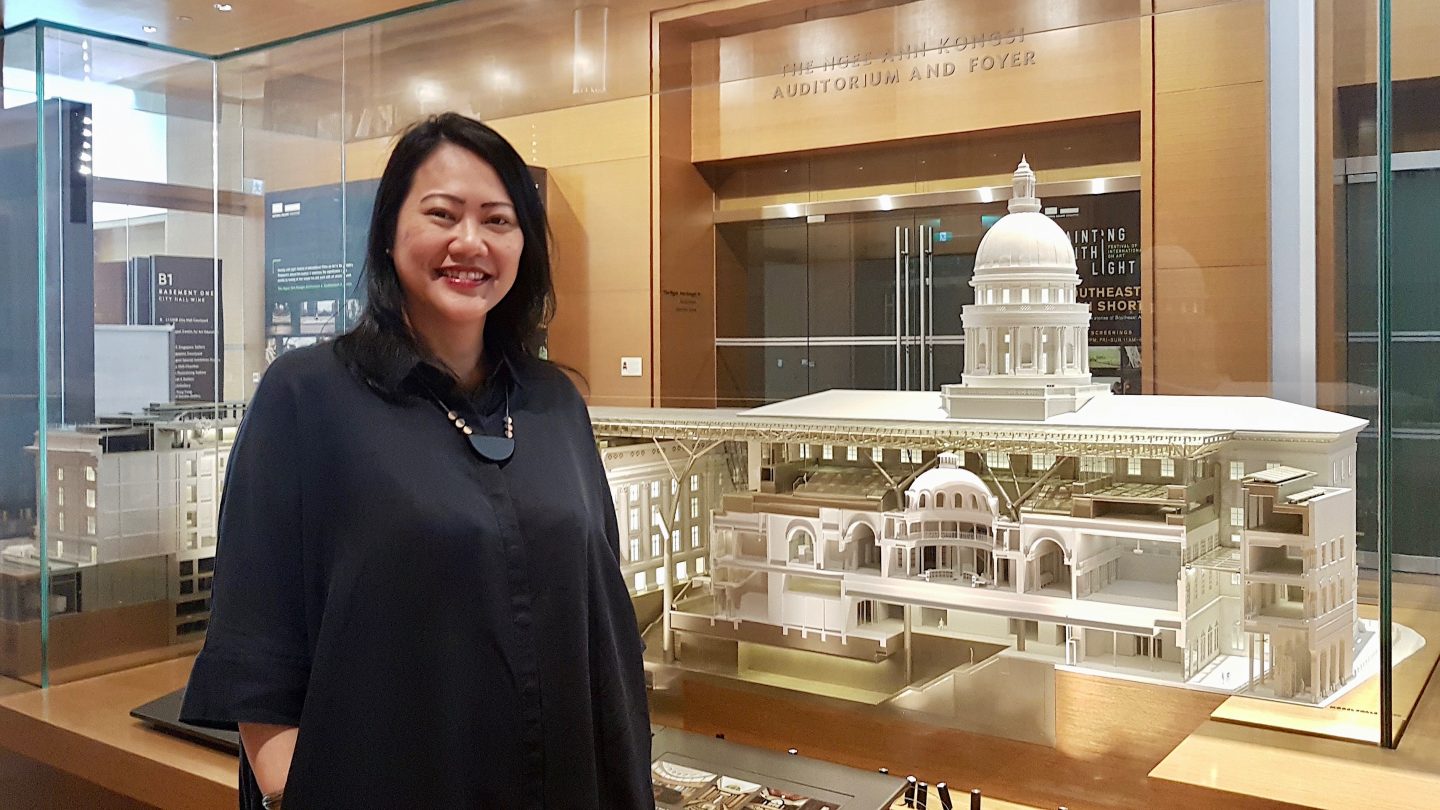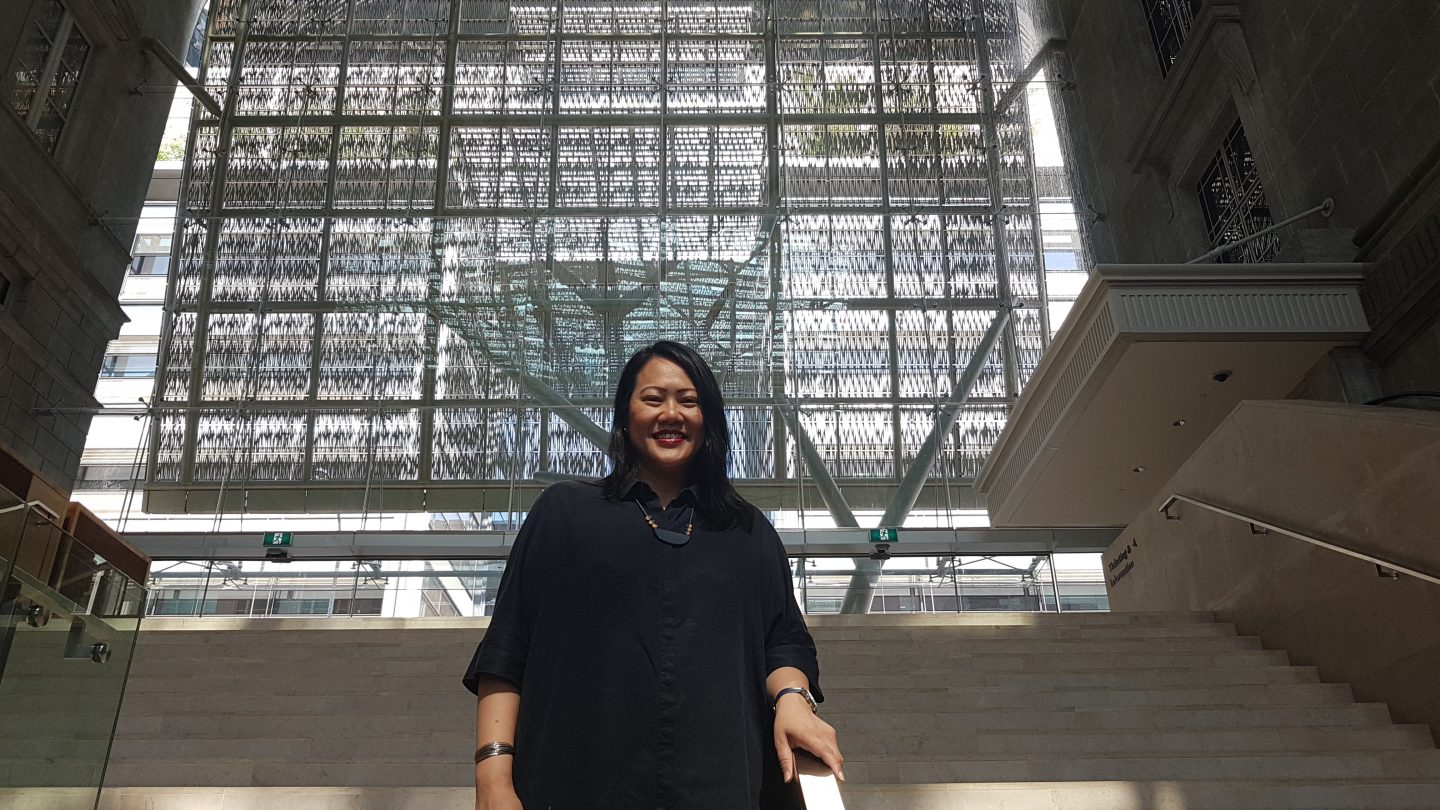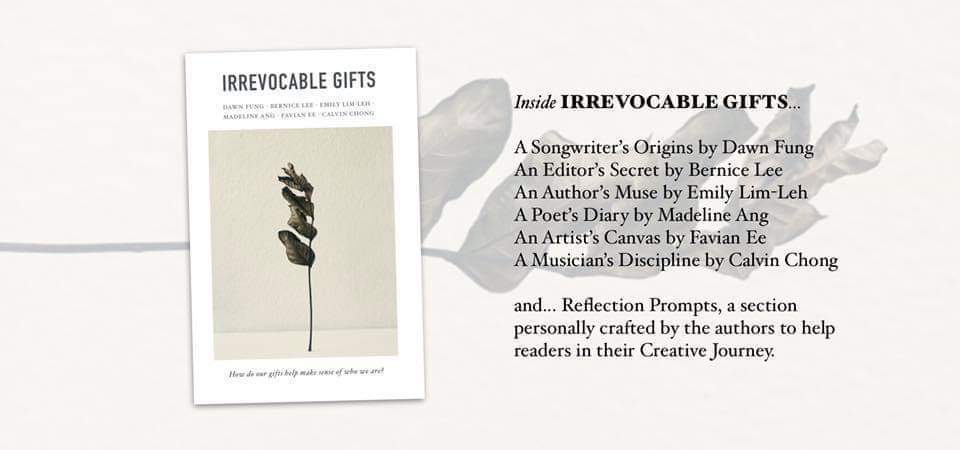Does Christian art have a place in pragmatic Singapore?
Priscilla Goy // October 25, 2018, 7:16 pm

“Christians talk about creating an ambience of worship in church. Music is one way, architecture is another way, art is yet another way," says Katharyn Peh, who has been working in arts and culture for 18 years.
Words have the power to communicate. And so does art.
“Art is also a language, just a different form of language,” says Katharyn Peh, 46, who has been in the arts and culture industry for 18 years.
She recalled a testimony by American contemporary abstract artist Greg Card, who had been commissioned by a church to produce a piece of artwork. The artwork ended up ministering to a woman with mental illness.
“As an artist who is Christian, your inspiration is from the Source, that’s why the artwork can be so powerful.”
“For a long time, the woman could not make sense of anything; she did not know who she was. But when she saw the artwork, she started to see order and have an understanding of things. The artwork healed her. She was someone who could not make sense of things, and yet the abstract artwork made sense to her.”
Peh will be speaking on The Power of Art at LuminoCity Asia 2018, a three-day forum featuring thought leaders and disciples in the marketplace.
She has had careers in the National Arts Council, the National Museum of Singapore and, since 2012, the National Gallery Singapore. She currently heads its Community & Access department, which looks into improving accessibility at the Gallery for underprivileged groups, such as persons with disabilities and low-income families.
Speaking to Salt&Light in an interview last week, Peh added that, as Card grew closer to the Lord, “the anointing came, he started to see people have their lives transformed, get healed and get ministered to”.

Peh heads the National Gallery’s Community & Access department, which looks into improving accessibility at the Gallery for underprivileged groups, such as persons with disabilities and low-income families.
“That was the difference – the artist’s relationship with the Father, his walk with the Lord. If you have that artistic skill, but you are not walking with the Lord, you can easily be taking your inspiration from a counterfeit source. But as an artist who is Christian, your inspiration is from the Source, that’s why the artwork can be so powerful.”
Art as ministry
Elaborating on the uniqueness of abstract art, Peh says: “I sometimes just like the medley of the colours and forms, and it makes me feel happy. You don’t have to read too much into it; just see how it makes you feel. Some pieces of art can make you feel peaceful and at ease, or make you want to keep looking more as you spot new details, or provoke you to think. There’s no hard science to it.”
Art can also help people to express emotions that may have been “locked in” for a long time or that remind them of past memories, says Peh.
She hopes to reconcile artists with the Church body, in order to reconcile visual arts creators with the ultimate Creator.
In Singapore, for instance, the Alzheimer’s Disease Association has run an Arts & Dementia programme since 2013 to provide opportunities for dementia sufferers to connect with past experiences and memories, and to express themselves through art.
It can also come in very useful in the overseas mission field. “If you don’t speak the language, you can draw something, and it can speak to and minister to the person,” says Peh.
In the past, especially in the Renaissance period between the 14th and 17th Centuries, art played a significant role in the Church as many cathedrals and churches in Europe featured paintings depicting key stories in the Bible.
But somehow, that role has diminished over the years, with Christian art rarely being commissioned or bought by the Church.
Christian artists can sometimes find it difficult to connect with the Church, she says. She hopes to reconcile artists with the Church body, in order to reconcile visual arts creators with the ultimate Creator.
Where are the Christian artists?
“Music and other media are embraced by the Church. If someone’s gifted in music, he or she can join the worship team. But if they are gifted as visual artists, where do you place them?”
She says Christian artists often want to serve the Church with their talents, but do not know how.
A guiding principle that Christian artists can adopt is Philippians 4:8 – producing artwork that is true, honourable, just, pure, lovely and commendable.
“They sometimes feel, ‘I’m struggling financially, I’m struggling with my identity or worth in society, but no one seems to speak my language, no one can help me understand my place and my calling here’.
“When they produce an artwork and show it to their cell group members, they get a rude shock when people say, ‘Why did you create something like that? Why are you creating something so dark?’
“So the artists say, ‘If I can’t find acceptance in the Church, then let me look elsewhere to see what success looks like in society.’ So they start to emulate the formula of other successful artists and pander to what is popular in the society, where their growth as a Christian actually allows them to find their unique voice and expressions that a broken world is looking for.”
Peh says a guiding principle that Christian artists can meditate on is Philippians 4:8 – to consider whatever is true, honourable, just, pure, lovely and commendable in their artistic creation or expression.
But as with any Christian’s journey, there are “valley moments” too, during which Christians can still create beautiful artwork about valuable lessons during trying times.
So is it okay for Christian art to be “dark”?

Christian artwork by artist Irene Wong, displayed in Peh’s office.
Peh suggests artists ask themselves a few questions:
- How does the artwork make you feel?
- Is this glorifying God or man or the darkness?
- What is the message they want to share?
- What form of expression best conveys this message?
“Is this the right time and season to show it, or is it for you to go through a journey, express it on a canvas, and then just keep it for a moment first? Build on that and see how that evolves,” she says. “If you feel that it’s something to be shared with an audience, then what is the message? That’s very important.
“The artist can decide and perhaps pray about whether the artwork should be shown as a standalone piece, or as part of a whole journey that shows hope and brings out the redemptive or restorative message to the viewers.”
She adds: “It does not mean that Christian artists never portray anything ugly, because we still live in a fallen world. There’s truth to be told. For instance, you see impactful works of art that show atrocities of war to bring across a sobering message. They are not expected to just create pretty things.”
An ambience of worship
While producing artwork is often done in silos, Peh hopes more Christian artists would connect with the church community.
“How are you able to serve the community if you’re not part of the community? Artists need to rise above their introspective nature and make an effort to be connected with the church community, so they can grow in their faith, be sharpened in their walk and let their testimonies speak through their canvas.”
“If artists have that close walk with God, the Father will reveal things that are going to amaze society.”
Meanwhile, the church community could also be more supportive, such as commissioning and buying original artworks by Christian artists, says Peh.
“People ask me, ‘Why would I need to buy art?’ Well you never know whose lives it could touch. You can invite people to your house, have some good artwork around, talk about the artwork, where you bought it, and you can share the Gospel.”
She says many artists struggle financially, so one upcoming new initiative to support them is an art exhibition in October 2019 featuring Christians’ artwork. It will be organised by the Arts Collective, a ministry of the Bible Society of Singapore made up of Christians working professionally in the arts.
Churches could feature more artwork too.
“Christians talk about creating an ambience of worship. Music is one way, architecture is another way, art is yet another way. Art can be seen as part of the whole worship ambience and experience,” says Peh.
“The wonderful thing about artists who are Christians is that they have a direct relationship with the ultimate Creator – their inspiration is heavenly.
“If they have that close walk with God, the Father reveals things that are going to amaze society. That, I would say, is the ultimate selling point.”
Catch Katharyn Peh at LuminoCity Asia 2018, a three-day forum from November 2 to 4, featuring thought leaders and disciples in the marketplace. She will be speaking on The Power of Art.
We are an independent, non-profit organisation that relies on the generosity of our readers, such as yourself, to continue serving the kingdom. Every dollar donated goes directly back into our editorial coverage.
Would you consider partnering with us in our kingdom work by supporting us financially, either as a one-off donation, or a recurring pledge?
Support Salt&Light


